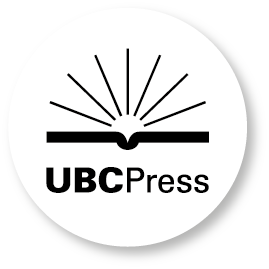

At the end of the twentieth century, North America was reinvented as an economically cohesive whole, united by free trade. But within the bold concept of continental unity expressed by the 1989 Canada-US Free Trade Agreement and 1994 North American Free Trade Agreement lay a paradox. While art was mobilized to frame this new narrative, culture itself was explicitly excluded from the agreements that implemented this vision.
Trading on Art brings culture to the fore by examining a wealth of artworks, exhibitions, and museum programs from the 1980s to 2010. On one hand, initiatives such as 49th Parallel, a gallery of contemporary Canadian art in New York City, communicated government-supported messaging about economic integration. Conversely, works such as Free Expression, by Canadian activist artists Carole Condé and Karl Beveridge, articulated apprehension about impending US cultural hegemony.
Sarah E.K. Smith reveals how Canadian artists engaged with, contested, and reflected on free trade, paying particular attention to the ways in which art was used to forge ties between Canada and Mexico and to circulate ideas about North American identity. Her nuanced analysis convincingly makes the case for the centrality of art in conceptualizing continental unity.
This original and insightful work will not only find an audience among scholars and students of art history, cultural studies, international relations, diplomatic studies, museum studies, and Canadian studies, but will also appeal to museum curators, arts administrators, diplomats, and other readers with an interest in art and cultural history.
Smith brings the conversation about North American cultural integration into an entirely new realm. Trading on Art is a book that will be read not only in its time but for years to come.
A tour de force of cultural analysis, Trading on Art will enrich the fields of Canadian studies, American studies, border studies, cultural studies, communications studies, and art history immensely.
Sarah E.K. Smith is an associate professor in the Faculty of Information and Media Studies at Western University, where she holds the Canada Research Chair in Art, Culture, and Global Relations, and leads the Practitioner Media Lab. She is the author of General Idea: Life & Work and co-editor, with Sascha Priewe, of Museum Diplomacy: How Cultural Institutions Shape Global Engagement. She is a co-founder of the multidisciplinary research network the North American Cultural Diplomacy Initiative, a member of the International Cultural Relations Research Alliance, and an editorial board member of the Canadian Journal of Communication. She also has an active curatorial practice.
Introduction
Part 1: Exhibiting Diplomacy
1 Mexican Art in Canada
2 Canadian Art at 49th Parallel
Part 2: Picturing North America
3 Exhibiting the Continent
4 Settler State Claims to Indigeneity
Part 3: Creating Resistance
5 Reading inSite against the Cultural Exemption
6 Changing Narratives of Free Trade in Video Art
Epilogue: Art and the Invention of North America
Notes; Bibliography; Index








